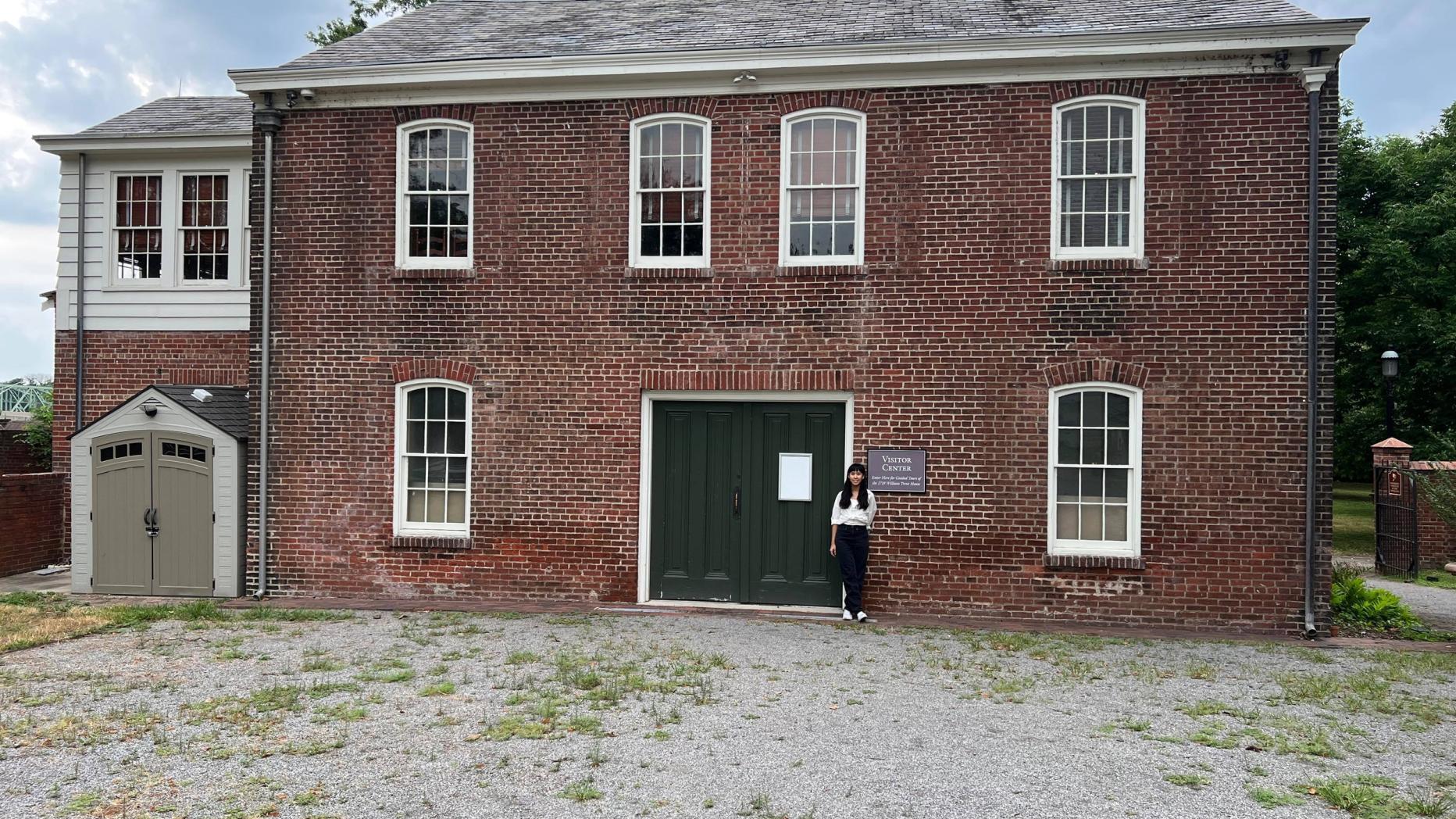Jun-Ai (Florence) Wang | 1719 William Trent House Museum

The entrance and east facade of the visitor center of the 1719 William Trent House Museum.
Stuart Weitzman School of Design
102 Meyerson Hall
210 South 34th Street
Philadelphia, PA 19104

The entrance and east facade of the visitor center of the 1719 William Trent House Museum.
This summer, I interned at the 1719 William Trent House Museum, a national historic landmark in Trenton, New Jersey. I worked this full-time position remotely most of the time and visited the site once in two weeks.
1719 William Trent House Museum, with an area of 5.2 acres, includes a garden plus the brick dwelling house and a stable located southwest of the main house. The house constructed in 1719 was a residence of William Trent, a prominent merchant based in Philadelphia in the 18th century and also known as the founder of Trenton, New Jersey, and his family. This Early Georgian Colonial brick building served as the residence of three Governors through the following century and was listed in both the State and National Registers of Historic Places in 1970. The house museum, which opened in 1936, now belongs to the City of Trenton and is operated by the Trent House Association. The main house was carefully preserved and open to the public, and the original stable was altered into the visitor center as well as the exhibition space of the museum.
Two main tasks were assigned during my internship. The first task was to help with the rearrangement of the visitor center, a stable located next to the main house. My responsibility was to make a design that satisfies the multiple needs of the space, develop a better way to display the collection, improve circulation, and enhance the interaction between exhibits and visitors at the same time. The second task was to develop a possible life story for Yaff, an enslaved man once owned by William Trent and later a runaway whom we knew from the old newspaper. The possible life story may further benefit the video about Yaff that the museum is going to make. At the end of the internship, I had an opportunity to give a comprehensive design proposal to the Trent House committee members.
The courses of the first year in the program equipped me with crucial skills for the position. Through the design working progress, I was able to utilize the knowledge I learned from Digital Midea (HSPV 624) class and further cultivated my software techniques, especially the 3D model-making skill. The training for recording and documenting in HSPV 600 also benefited me in creating the floor plan of the visitor center. I got a better understanding of slavery history in New Jersey by researching the enslaved people’s life stories and reading the runaway ads from the 18th century when I figured the research skills I gained from HSPV 600 helped me a lot.
It is a precious and satisfying experience to work with Dr. Samuel Stephens, interim executive director, and Ms. Shawn Carney, administrator, docent, and researcher of the 1719 William Trent House Museum. I am grateful for the opportunity to connect the knowledge I acquired in class with the practice in working place and a first-hand look at the museum work.